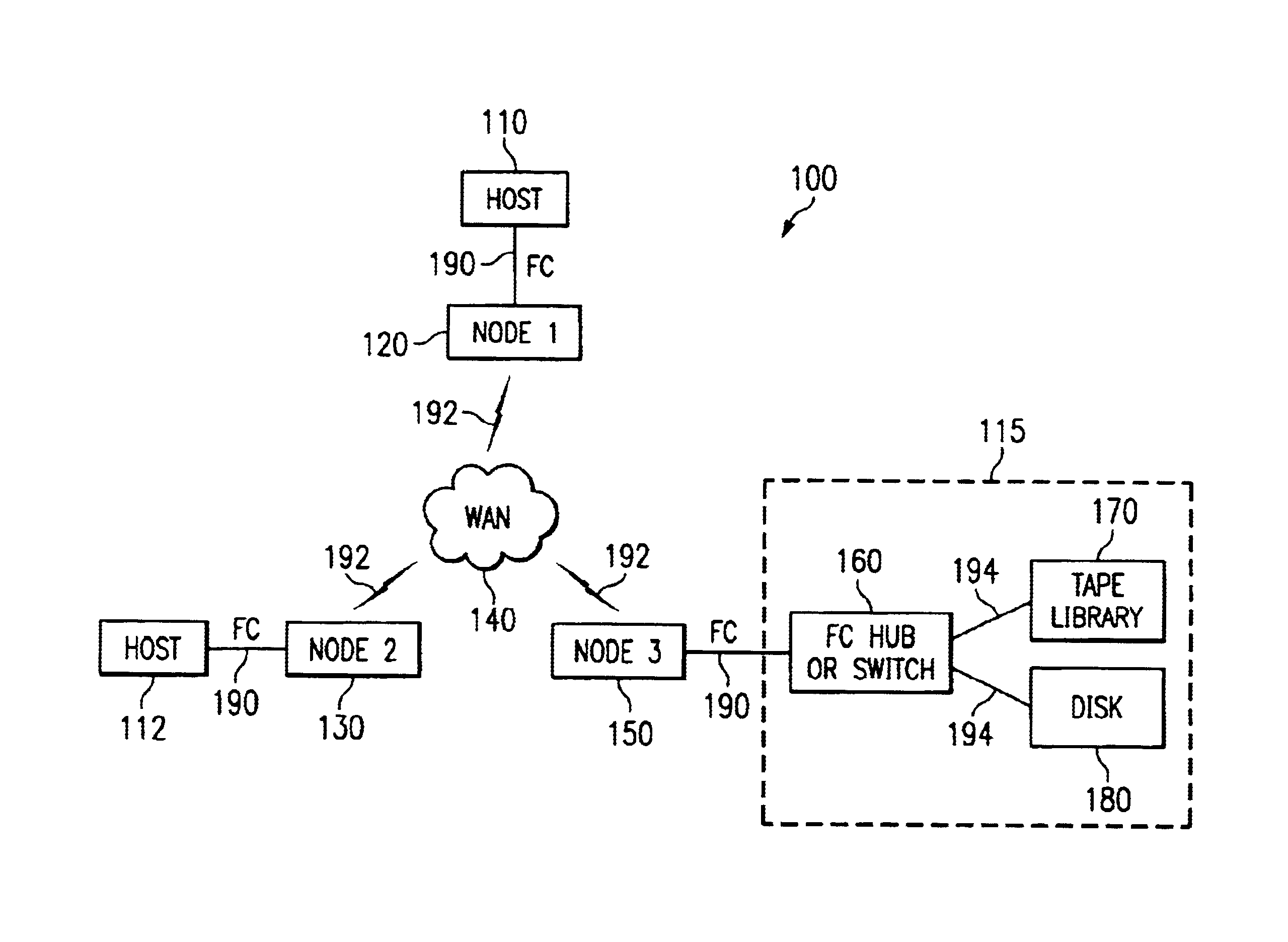System for mapping addresses of SCSI devices between plurality of SANs that can dynamically map SCSI device addresses across a SAN extender
a technology of dynamic mapping and scsi devices, applied in the field of storage area networking, can solve the problems of slowing all other computer operations, one-to-one, or point-to-point, and insufficient connection speed, efficiency and reliability, and reduce the efficiency of scsi device addressing
- Summary
- Abstract
- Description
- Claims
- Application Information
AI Technical Summary
Benefits of technology
Problems solved by technology
Method used
Image
Examples
Embodiment Construction
Preferred embodiments of the present invention are illustrated in the FIGUREs, like numerals being used to refer to like and corresponding parts of various drawings.
The present invention provides a method and system for mapping addressing of SCSI devices between two SANs connected by a SAN extender across a packet-based network that take advantage of existing telecommunication networks to efficiently and cost-effectively connect multiple, and perhaps geographically diverse, SANs such that they can operate as if they were a single storage area network. Host devices on one SAN can therefore access target devices on a remote SAN as if the two were part of a single SAN. The method and system of this invention can thus effectively overcome the distance limitations of existing fibre channel networks so that the SAN model can be extended to many SANs over many miles. The present invention could, for example, be used to link a corporate SAN in Los Angeles to another corporate SAN in New Yor...
PUM
 Login to View More
Login to View More Abstract
Description
Claims
Application Information
 Login to View More
Login to View More - R&D
- Intellectual Property
- Life Sciences
- Materials
- Tech Scout
- Unparalleled Data Quality
- Higher Quality Content
- 60% Fewer Hallucinations
Browse by: Latest US Patents, China's latest patents, Technical Efficacy Thesaurus, Application Domain, Technology Topic, Popular Technical Reports.
© 2025 PatSnap. All rights reserved.Legal|Privacy policy|Modern Slavery Act Transparency Statement|Sitemap|About US| Contact US: help@patsnap.com


